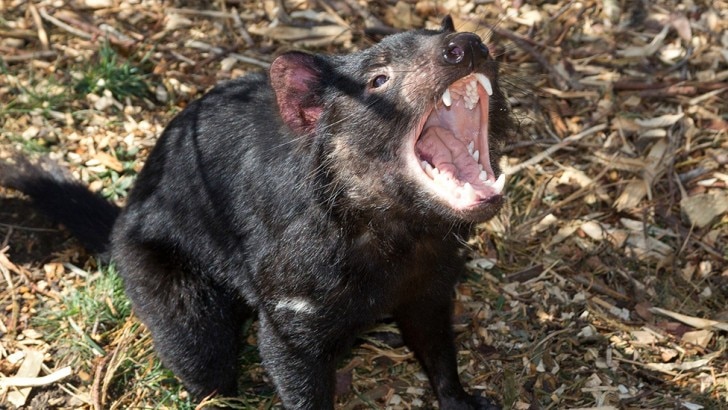BBC Earth newsletter
BBC Earth delivered direct to your inbox
Sign up to receive news, updates and exclusives from BBC Earth and related content from BBC Studios by email.
Seven Worlds, One Planet
Understanding an astounding animal who has been saddled with a name it doesn’t deserve.
While the actual Tasmanian devil bears little resemblance to the famous cartoon character, the two do have one thing in common. Real Tasmanian devils also easily break into fits of anger, and while there aren’t any whirling dust clouds, their bad moods are characterised by growls, snarls and the bearing teeth. These outbreaks of temper can have many causes, including feeling threatened or trying to defend food. Did we mention they were relatable?
The Tasmanian devil, indigenous to Tasmania, is believed to have once also lived on the Australian mainland, before being hunted to extinction. Their name was given to them by European settlers thanks to their high-pitched cry, although the literal translation of their scientific name, Sarcophilus harrissii, is the less terrifying ‘Harris Meat Lover’.

Meat lover is a pretty accurate name – these guys are one of the world’s most efficient eaters. The devil’s diet consists primarily of small prey (such as snakes and rodents) and they can eat 40% of their own body weight. You won’t find many leftovers once the Tasmanian Devil is finish with a meal. Unlike other animals, they don’t just consume the meat, they will also eat the hair, the organs, even the bones!
When European settlers first encountered the Tasmanian devil they considered it a pest. The devils were hunted to near extinction until measures were taken in 1941 to protect them. This restored the population until 1996, when a new and deadlier threat emerged.
The declining population of the Tasmanian Devil can now be place squarely on a single cause, Devil Facial Tumour Disease (DFTD). DFTD is a form of cancer, easily identifiable by large growths on their head and around their mouth. This generally makes it difficult for them to feed, and therefore they become weak and usually die within 3-6 months. Since the disease was identified in the early 1990s, the Tasmanian Devil population has declined by 80%.

While DFTD is the main problem causing the decline of the Tasmanian Devil, it heightens the other problems facing them. The dwindling populations has greatly increased the occurrences of inbreeding and increased competition for food. While there is currently no cure for DFTD, there is still hope for the devils. In 2003, the Tasmanian and Australian governments launched the Save the Tasmanian Devil Program.
Save the Tasmanian Devil Program has adopted a system of captive management, where Tasmanian Devil’s that aren’t infected with DFTD are moved to isolated locations to prevent the spread. These include Maria Island, which was set up as a sanctuary. It enables a safe haven for the Tasmanian devil to recover. The population of the island was 103 when they checked in 2018 and they’ve had five successive breeding sessions.